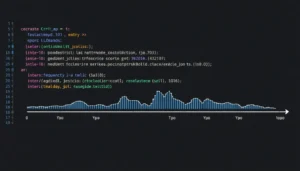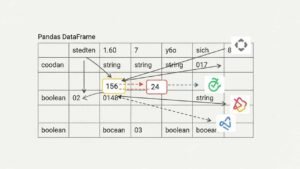Torino 2006 Winter Olympics: Lessons from Turin's Bold Bid and Legacy
- THE MAG POST
- 35 minutes ago
- 6 min read

Torino 2006 Winter Olympics marked a watershed moment in how a city translates a bold bid into durable urban, cultural, and economic gains. The narrative unfolded as a blend of strategic planning, public investment, and regional collaboration, all under a global spotlight that demanded both spectacle and accountability.
In the years that followed, Turin’s Games offered a portrait of legacy-building: infrastructure that outlives the event, a tourism platform that redefines a city’s image, and governance lessons that continue to inform future hosts seeking balance between ambition and sustainability.
Origins and Bidding Saga
Turin’s bid for prestige and practical impact revealed how a host city negotiates ambition with accountability, turning political theater into a plan for lasting urban change. The process blended diplomacy, finance, and regional cooperation, laying the groundwork for a global showcase that would stretch beyond a single ceremony and reshape perceptions of what a winter Games can deliver.
In the end, the Torino 2006 Winter Olympics narrative became a study in governance, logistics, and legacy, illustrating how careful bidding can translate into tangible infrastructure and cultural renewal. The story also underscored the persistent tensions between spectacle, cost, and post-event vitality, offering a template for future host cities navigating the same crossroads.
The Selection Process
The bid race featured a formal two-city finalist phase managed by a Selection College, designed to insulate decisions from direct visits and bribery concerns. Turin and Sion emerged as the primary contenders, while Helsinki and others were filtered out after their final presentations. The audience watched as a Swiss favorite yielded to an Italian entrant, prompting worldwide astonishment and later reflection on procedural reforms.
Turin’s victory hinged on a broader calculus: the capacity to mobilize regional assets, align transport and venues, and promise a cultural dividend that would outlive the Closing Ceremony. The decision, framed by the IOC’s new governance framework, signaled a shift toward transparency and strategic collaboration across evolving European networks, with Torino at the center of the dialogue about what a modern Games should cost and yield.
Political Dynamics and Public Scrutiny
The bidding saga unfolded under a microscope, with observers linking the Turin choice to reforms stemming from the Salt Lake City and Nagano scandals. Critics argued that ensuring impartial evaluation required independent oversight, while proponents cautioned against overcorrecting at the expense of momentum. The debate intensified as national and regional stakeholders negotiated funding, security, and marketing commitments.
Public scrutiny extended to the media landscape, where questions of accountability, regional benefit, and long-term impact shaped coverage. As Torino prepared to host, leaders emphasized tangible returns for urban regeneration, tourism, and social cohesion, while balancing fiscal discipline with the aspirational promise of a Games that could redefine a city’s global standing.
Staging Turin: Venues, Vision, and Logistics
Turin’s transformation into a winter-sports centerpiece showcased a deliberate architectural and logistical bravura, where iconic venues and curated districts converged to create a coherent, spectator-friendly ecosystem. The investment aimed to fuse traditional Italian design with cutting-edge functionality, leaving a physical and cultural imprint that extended far beyond the competition schedule.
The planning emphasized compact clustering of sites, durable venues, and an integrated transport network designed to support daily flows, media visibility, and fan engagement. In this light, the Games were as much a urban project as a sporting one, intended to catalyze renewal, tourism, and international perception of a city and its surrounding region.
Venues and Infrastructure
Educated bets on venue design materialized in a portfolio of facilities that unified Turin’s central districts with surrounding mountain towns. The project encompassed roughly 65 sports venues and related infrastructures, underpinned by a multi-year investment around the 1.7 billion euro mark. Core hubs included Oval Lingotto for speed skating and the Torino Esposizioni for ice hockey, with several sites repurposed for long-term community use.
A coordinated “Olympic District” stitched together arenas, training centers, and media complexes, while curling and bobsleigh tracks leveraged existing Alpine settings. National and regional public works connected venues through upgraded roads and a modern metro framework, supported by a dedicated Olympic Village network that balanced athlete comfort with post-Games utility for residents and visitors alike.
Mobility, Spectator Experience, and Media
Mobility planning sought to ease spectator movement while mitigating city-wide disruption. A new metro line was introduced, though its opening timing and coverage created challenges for late-evening events. A day-pass pricing strategy aimed to simplify transit use, but service cuts after 6 pm highlighted the persistent friction between event schedules and urban logistics.
Media infrastructure benefited from high-definition broadcasting and centralized press centers, enabling broad international access. The organizational emphasis on branding, venues, and sightlines sought to maximize fan engagement, capture global narratives, and ensure that the Olympic footprint would endure in Turin’s urban memory and tourism landscape even after the final medal ceremony.
Costs, Economic Footprint, and Legacy
Financial scrutiny accompanied Turin’s bid-to-games arc, with cost estimates and execution realities shaping debates about value, risk, and accountability. The economic footprint became a focal point for policymakers, researchers, and the public, prompting thoughtful questions about the balance between world-class facilities and sustainable urban development.
Beyond the numbers, the Games prompted a reimagining of what a host city could become: a catalyst for tourism, education, and regional cooperation. The Turin experience illustrated how legacy planning—encompassing transport, housing, and cultural programming—could outlive the event itself, redefining the city’s international brand and future growth trajectories.
Budget Realities and Cost Overruns
Independent cost analyses placed Torino 2006 within the broader pattern of Winter Games spend, with the Oxford study noting substantial overruns and an outturn around the tens-of-billions of dollars in 2015-dollars equivalents. While such figures are debated, the emphasis remains on understanding how operational costs, capital investments, and venue maintenance converge to shape overall affordability and long-term returns.
Evaluations stressed the importance of transparent budgeting, risk mitigation, and contingency planning. The Torino case highlighted how early-stage forecasts interact with real-world expenditures, reminding future organizers to anchor expectations in robust governance, measurable community benefits, and disciplined project governance that can withstand political and economic shifts.
Post-Games Transformation and Tourism
Turin leveraged the event to pivot toward lasting social and economic gains, including heightened tourist interest, improved urban services, and a renewed cultural vitality. The city’s development programs, often coordinated with regional partners, aimed to sustain momentum through tourism-driven economic activity, new business opportunities, and expanded international visibility.
Infrastructure improvements, such as enhanced transit and public spaces, were designed not as one-off gains but as foundational capabilities for ongoing urban renewal. The broader regional strategy sought to cement Turin’s status as a European sport, culture, and education hub, using the Games as a springboard for long-term competitiveness and quality-of-life enhancements.
Athletes, Highlights, and Controversies
Athletes’ performances delivered a mosaic of moments that testified to preparation, resilience, and the convergence of regional talent with global competition. From cross-country dominance to sprinting breakthroughs, the Turin Games produced narratives of perseverance, technical mastery, and the enduring appeal of winter sport excellence.
Controversies, governance questions, and doping inquiries tested the integrity of the competition and the strength of oversight mechanisms. The interplay between athletic achievement and regulatory scrutiny underscored the importance of robust anti-doping programs, transparent adjudication, and continuous reform to preserve the sport’s credibility for athletes and fans alike.
Medal Moments and Records
Iconic performances punctuated the schedule, including breakthroughs in biathlon, luge, and speed skating that etched athletes’ names into Olympic memory. The event also showcased remarkable endurance and strategic pacing across endurance disciplines, with several hosts achieving milestone performances that energized fans and inspired future generations of competitors.
In parallel, new talents emerged from nations with improving winter-sport programs, signaling shifts in the traditional medal table. These moments reinforced the value of balanced competition, where experience and youth converge to deliver surprise results, enduring records, and a richer tapestry of Olympic drama for audiences worldwide.
Doping Scandals and Governance Reforms
Turin’s games were shadowed by doping investigations that culminated in lifetime bans for several Austrian athletes, highlighting the persistent tension between competitive drive and clean sport. The IOC’s post-event screening program and subsequent reviews illustrated the ongoing need for rigorous testing, independent oversight, and transparent consequence pathways for infractions.
Subsequent retests and investigations reinforced the message that integrity must be central to Olympic governance. Reform efforts emphasized governance reforms, athlete welfare, and stronger coordination among international bodies, national committees, and organizing committees to safeguard fair play while ensuring that the Games remain a unifying event rather than a contested arena of controversy.
Key Takeaways
Turin’s 2006 Winter Olympics demonstrates how a well-planned bid can catalyze urban renewal, economic activity, and international stature, even as it tests governance, budgeting, and legacy planning against real-world pressures. The experience offers a blueprint for balancing spectacle with sustainable development, transparency with ambition, and memory with ongoing impact.
Aspect | Highlights |
Bid process | Selection College, Turin chosen over Sion; IOC reforms |
Venues & Infrastructure | 65 facilities, 1.7B euros invested; Olympic District created |
Costs & Overruns | Outturn around US$4.4B (2015 USD); ~80% cost overrun |
Legacy & Tourism | Urban renewal, metro upgrades, long-term tourism growth |


















































